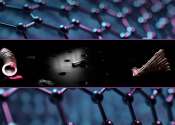Gold (pronounced /ˈɡoʊld/) is a chemical element with the symbol Au (Latin: aurum) and an atomic number of 79. It has been a highly sought-after precious metal in jewelry, in sculpture, and for ornamentation since the beginning of recorded history. The metal occurs as nuggets or grains in rocks, in veins and in alluvial deposits. Gold is dense, soft, shiny and the most malleable and ductile pure metal known. Pure gold has a bright yellow color and luster traditionally considered attractive, which it maintains without oxidizing in air or water. It is one of the coinage metals and formed the basis for the gold standard used before the collapse of the Bretton Woods system in 1971.
At the end of 2006, it was estimated that all the gold ever mined totaled 158,000 tonnes. This can be represented by a cube with an edge length of just 20.2 meters. Modern industrial uses include dentistry and electronics, where gold has traditionally found use because of its good resistance to oxidative corrosion and excellent quality as a conductor of electricity. Chemically, gold is a transition metal and can form trivalent and univalent cations upon solvation. At STP it is attacked by aqua regia (a mixture of acids), forming chloroauric acid and by alkaline solutions of cyanide but not by single acids such as hydrochloric, nitric or sulfuric acids. Gold dissolves in mercury, forming amalgam alloys, but does not react with it. Since gold is insoluble in nitric acid which will dissolve silver and base metals, this is exploited as the basis of the gold refining technique known as "inquartation and parting". Nitric acid has long been used to confirm the presence of gold in items, and this is the origin of the colloquial term "acid test", referring to a gold standard test for genuine value.









